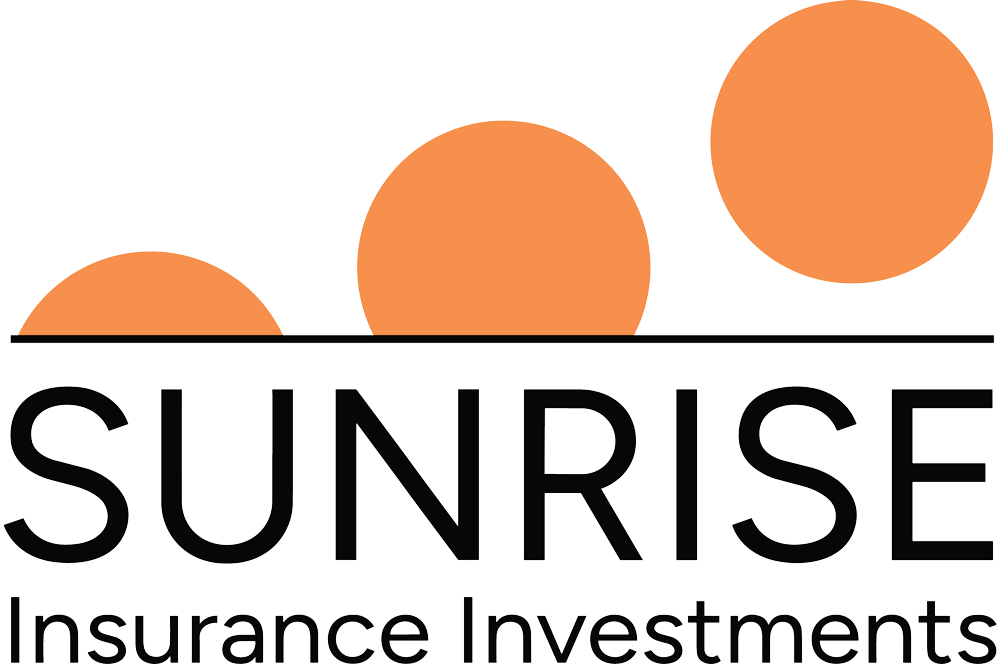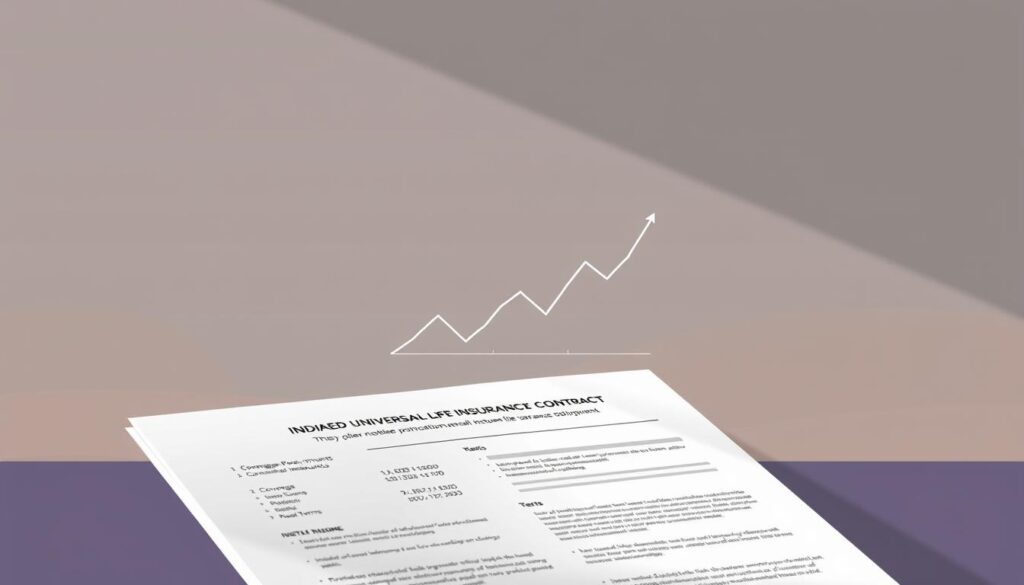Are you thinking about investing in Indexed Universal Life (IUL) insurance? You might wonder why it’s not a good choice for many. IUL insurance looks appealing because of its potential for high returns and tax benefits. But, it’s important to know its complexity and potential downsides, like indexed universal life insurance drawbacks and reasons to avoid IUL.
The S&P 500 index has done better than IUL over long periods. It’s key to understand both the good and bad sides of IUL insurance. To learn more and see if it fits your needs, get a free consultation by calling 619-735-8737 or book a 30 minutes appt. at https://calendly.com/understandingmoney.
Introduction to IUL Insurance
IUL insurance is meant to be a safe place to save with the chance for market gains, if done right. But, IUL policies have fees like monthly fees, death benefit charges, and early termination penalties. These can make IUL a bad investment.
Key Takeaways
- IUL insurance might offer higher returns and tax benefits, but it’s complex and has high fees, making it a bad choice for many.
- The S&P 500 index has beaten IUL over long periods, so it’s vital to know the downsides of indexed universal life insurance.
- IUL policies can grow tax-free and let you access cash value tax-free anytime.
- Many people have too much in their 401(k)s and could benefit from diversifying with a max-funded IUL, but it’s important to consider its drawbacks.
- IUL policies usually don’t do as well as low-cost index funds because of high fees, gain caps, and complex structures, showing why it’s not always a good choice.
- Getting a free consultation with a specialist can help you understand IUL insurance better and decide if it’s right for you, considering its drawbacks.
- IUL insurance can protect against market losses, higher taxes, lawsuits, and serious illnesses or injuries, but it’s crucial to weigh its pros and cons.
Understanding the Basics of Indexed Universal Life Insurance
Indexed universal life insurance, or IUL, is a permanent life insurance. It has a death benefit and a cash value tied to an investment index. It’s designed for higher returns and tax benefits. The cash value grows with a stock market index, like the S&P 500.
An IUL policy has a death benefit, cash value, and an investment index. Knowing how these parts work is key to choosing indexed universal life insurance. The promise of IUL is high returns and tax benefits. But, it’s important to know the real deal about IUL and its fees and risks.
IUL has a floor on returns, so the cash value won’t drop if the index does poorly. But, there’s a cap on returns, which might limit cash value growth. Premiums for IUL go up as you get older, because the risk of death increases. It’s crucial to read the fine print of an IUL policy to grasp its workings and risks.
In summary, indexed universal life insurance is complex and needs careful consideration. Understanding IUL basics helps make an informed choice. It’s important to weigh the risks and benefits before deciding if IUL fits your needs.
Why IUL is a Bad Investment: Breaking Down the Problems
When looking at investment options, it’s key to consider both the good and bad sides. Indexed Universal Life (IUL) insurance might look appealing at first. But, it has several iul drawbacks that make it a poor choice for many. One major reason to avoid iul is its complex nature, making it hard to grasp and manage.
Some major issues with IUL insurance include hidden fees and poor investment results. For instance, IUL policies often cap returns, limiting what you can earn. Also, the fees can cut down the policy’s cash value, reducing your overall gains.
Another big problem is the uncertainty of returns. Since returns depend on the market, they can change a lot. This unpredictability, along with high fees and policy complexity, makes why iul is a bad investment a concern for many.
In summary, while IUL insurance might seem appealing, it’s crucial to think about the reasons to avoid iul and weigh the pros and cons. By understanding the potential downsides and limits of IUL insurance, investors can make better choices. This way, they can pick options that fit their goals and risk level better.
The Hidden Costs of IUL Policies
When looking at Indexed Universal Life (IUL) policies, it’s key to know the hidden costs of iul. These costs can lower the policy’s cash value. Iul fees and iul policy charges can make the policy more costly than you might think.
Some hidden costs of iul include administrative fees, cost of insurance deductions, and premium load charges. These fees change based on the insurer, the age and health of the insured. They can also have high front-loaded fees.
A table showing typical iul fees and iul policy charges is below:
| Fee Type | Description |
|---|---|
| Administrative Fees | Charges for policy administration and maintenance |
| Cost of Insurance Deductions | Charges for the cost of insurance coverage |
| Premium Load Charges | Charges for loading premiums into the policy |
It’s vital to understand these hidden costs of iul when deciding on IUL insurance. By looking at the iul fees and iul policy charges, you can see the policy’s good and bad sides.
Complex Policy Structure and Lack of Transparency
The Indexed Universal Life (IUL) insurance policies have a complex structure. This makes it hard for people to understand their policy’s true value. The policies are filled with many fees, charges, and caps, confusing even those who know a lot about investing.
One big issue with IUL policies is the lack of clear information. This makes it tough for policyholders to grasp how their policy works and what returns they can expect. This lack of clarity can cause misunderstandings and poor experiences for those who buy these policies.
Several factors make IUL policies complex. These include:
- Multiple layers of fees and charges
- Complex crediting formulas and interest rates
- Participation rates and caps on returns
- Surrender charges and penalties for early withdrawal

It’s crucial for those thinking about an IUL policy to carefully look at the policy details. This includes the policy structure and any fees. By understanding these, they can make a better choice about whether an IUL policy fits their needs.
The Cap Rate Dilemma in IUL Returns
The cap rate dilemma is a big problem in Indexed Universal Life (IUL) insurance. It affects how much money you can make from your policy. Knowing about participation rates helps figure out the policy’s real value and earnings potential.
The cap rate plays a big role in this dilemma. It sets a limit on how much interest you can earn, even if the index goes up a lot. For instance, if the index goes up 20%, but the cap rate is 8%, you only get 8% interest. This can really hurt the policy’s iul returns and make it less appealing to investors.
To grasp the cap rate dilemma, consider these key points:
- Participation rates: The percentage of the index’s increase that is credited to the policy.
- Cap rates: The maximum percentage of the index’s increase that can be credited to the policy.
- Market volatility: The potential for the index to fluctuate, affecting the policy’s returns.
In summary, the cap rate dilemma is a major concern in IUL insurance. It’s vital to understand the factors behind it. By looking at participation rates, cap rates, and market volatility, you can make smarter choices about your IUL policy.
| Factor | Description |
|---|---|
| Participation Rate | The percentage of the index’s increase that is credited to the policy. |
| Cap Rate | The maximum percentage of the index’s increase that can be credited to the policy. |
| Market Volatility | The potential for the index to fluctuate, affecting the policy’s returns. |
Policy Lapse Risks and Cash Value Complications
Indexed Universal Life (IUL) insurance policies have policy lapse risks and cash value complications. These can impact the policy’s performance and value. It’s crucial to understand these risks when considering IUL insurance.
The policy lapse risks with IUL policies can lead to losing the death benefit and cash value if the policy lapses. This happens if premiums aren’t paid or if the cash value is used up by fees. Cash value complications also make it hard to know the policy’s real value. This is because fees like administrative costs and surrender charges can reduce the cash value.
When looking at iul policy risks, consider these factors:
- Premiums that increase with age
- Fees and charges that can deplete the cash value
- Cap rates that can limit growth
- Participation rates that can affect returns
It’s important to carefully look at the policy terms and conditions. This helps understand the policy lapse risks and cash value complications of IUL insurance. By doing this, people can make better choices about their insurance needs and avoid problems.
The Tax Benefits Myth: Analyzing IUL’s Tax Implications
When looking at Indexed Universal Life (IUL) insurance, it’s key to grasp the iul tax benefits and tax implications of iul. IUL policies offer tax-free death benefits and tax-deferred growth. However, the modified endowment contract issues can complicate things and impact the policy’s worth and how it performs.
One major worry with IUL policies is the chance of modified endowment contract issues. These can change the policy’s tax status. It’s important to know how these issues might affect the policy’s value and performance. Also, the iul tax benefits can be limited by the tax implications of iul. So, it’s crucial to carefully look at the policy’s terms and conditions.
To make a smart choice about IUL insurance, it’s vital to understand the tax implications of iul. Also, think about other investment options. By knowing the potential risks and benefits, people can decide if IUL insurance fits their needs.
Better Investment Alternatives to IUL
Looking into alternative investments to iul is key. These options can give you better returns and lower fees. Traditional investment options like stocks and bonds often have higher returns and lower fees than IUL insurance. Also, combining term life insurance with investments can offer a more complete solution.
Some benefits of traditional investment options include:
- Higher potential returns
- Lower fees
- Greater flexibility
IUL insurance policies, on the other hand, have high fees, complex structures, and limited earnings potential. Exploring alternative investments to iul and term life insurance options helps individuals make better investment choices.

It’s important to consider the pros and cons of each investment. Think about your risk tolerance, financial goals, and time horizon. This way, you can create an investment strategy that meets your needs and goals.
| Investment Option | Potential Returns | Fees |
|---|---|---|
| Traditional Investments | Higher | Lower |
| IUL Insurance | Lower | Higher |
The Impact of Interest Rates on IUL Performance
It’s important to know how interest rates affect IUL insurance. As interest rates change, they can impact the iul performance and investment returns. The Federal Funds rate was 1.00% on June 9, 2023. It’s expected to rise to at least 2.62% by the end of the year.
The impact of interest rates on iul policies is significant. Insurance companies might take time to pass on investment gains to policies. But, rising interest rates can also boost IUL policies by increasing minimum crediting rates on new policies.
Here are some key points about the impact of interest rates on iul policies:
- Rising interest rates can lead to higher crediting rates on new money IUL policies.
- Insurance companies may raise caps and participation rates on in-force policies as interest rates rise.
- Increased interest rates have led more insurance companies to invest in volatility control index choices. This reduces option costs and allows for higher performance ceiling caps.
In conclusion, the impact of interest rates on iul performance is key when looking at IUL policies. As interest rates change, understanding their effect on iul performance and returns is crucial.
| Interest Rate | IUL Performance |
|---|---|
| 1.00% | Lower crediting rates |
| 2.62% | Higher crediting rates |
Common Sales Tactics and Misrepresentations to Watch For
When looking at Indexed Universal Life (IUL) insurance, knowing common sales tricks and false claims is key. Sales tactics often promise unrealistic return projections. This can lead people to buy policies they might not need. Also, misleading marketing materials can make it hard to see the policy’s real value and returns.
Sales tactics for IUL can be tricky. They might include hidden fees like administrative and cost of insurance fees. These fees can greatly affect how much you get back. It’s important to read the policy details carefully to avoid surprises. Watch out for:
- High-pressure sales techniques
- Emphasis on potential returns rather than actual performance
- Lack of transparency regarding fees and charges
Also, iul sales tactics often use misleading marketing materials. These materials might promise too much. It’s smart to be careful of promises that seem too good to be true. Instead, look at the policy’s real performance and risks. Knowing these tricks can help you make a better choice about IUL insurance.
It’s important to be careful with IUL insurance. Read the policy details well. This way, you can avoid being tricked by unrealistic return projections and misleading marketing materials. Making an informed choice about your insurance is key.
Conclusion: Making an Informed Decision About IUL
Understanding IUL insurance is key. Knowing its pros, cons, fees, and tax effects helps see its real value. A free consultation with a specialist can shed light on its complexity and downsides. This helps decide if IUL insurance fits your financial goals.
The Comdex rankings of top insurance companies like Minnesota Life (95) and John Hancock (93) are helpful. They show the financial strength of IUL policies. By looking at the guaranteed minimum interest rate and tax-deferred growth, you can compare benefits and risks. This helps choose a policy that matches your financial future.
Choosing IUL insurance means knowing its details. This includes the cap on returns and high fees. With professional advice and careful evaluation, you can pick the best option for your finances and comfort with risk.





